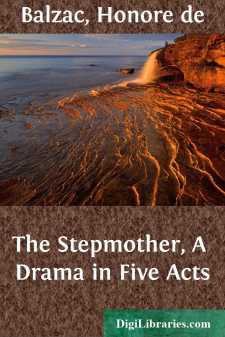Categories
- Antiques & Collectibles 13
- Architecture 36
- Art 48
- Bibles 22
- Biography & Autobiography 813
- Body, Mind & Spirit 141
- Business & Economics 28
- Children's Books 12
- Children's Fiction 9
- Computers 4
- Cooking 94
- Crafts & Hobbies 4
- Drama 346
- Education 46
- Family & Relationships 57
- Fiction 11826
- Games 19
- Gardening 17
- Health & Fitness 34
- History 1377
- House & Home 1
- Humor 147
- Juvenile Fiction 1873
- Juvenile Nonfiction 202
- Language Arts & Disciplines 88
- Law 16
- Literary Collections 686
- Literary Criticism 179
- Mathematics 13
- Medical 41
- Music 40
- Nature 179
- Non-Classifiable 1768
- Performing Arts 7
- Periodicals 1453
- Philosophy 64
- Photography 2
- Poetry 896
- Political Science 203
- Psychology 42
- Reference 154
- Religion 513
- Science 126
- Self-Help 83
- Social Science 81
- Sports & Recreation 34
- Study Aids 3
- Technology & Engineering 59
- Transportation 23
- Travel 463
- True Crime 29
Beatrix
by: Honore de Balzac
Categories:
Description:
Excerpt
I. A BRETON TOWN AND MANSION
France, especially in Brittany, still possesses certain towns completely outside of the movement which gives to the nineteenth century its peculiar characteristics. For lack of quick and regular communication with Paris, scarcely connected by wretched roads with the sub-prefecture, or the chief city of their own province, these towns regard the new civilization as a spectacle to be gazed at; it amazes them, but they never applaud it; and, whether they fear or scoff at it, they continue faithful to the old manners and customs which have come down to them. Whoso would travel as a moral archaeologist, observing men instead of stones, would find images of the time of Louis XV. in many a village of Provence, of the time of Louis XIV. in the depths of Pitou, and of still more ancient times in the towns of Brittany. Most of these towns have fallen from states of splendor never mentioned by historians, who are always more concerned with facts and dates than with the truer history of manners and customs. The tradition of this splendor still lives in the memory of the people,—as in Brittany, where the native character allows no forgetfulness of things which concern its own land. Many of these towns were once the capitals of a little feudal State,—a county or duchy conquered by the crown or divided among many heirs, if the male line failed. Disinherited from active life, these heads became arms; and arms deprived of nourishment, wither and barely vegetate.
For the last thirty years, however, these pictures of ancient times are beginning to fade and disappear. Modern industry, working for the masses, goes on destroying the creations of ancient art, the works of which were once as personal to the consumer as to the artisan. Nowadays we have products, we no longer have works. Public buildings, monuments of the past, count for much in the phenomena of retrospection; but the monuments of modern industry are freestone quarries, saltpetre mines, cotton factories. A few more years and even these old cities will be transformed and seen no more except in the pages of this iconography.
One of the towns in which may be found the most correct likeness of the feudal ages is Guerande. The name alone awakens a thousand memories in the minds of painters, artists, thinkers who have visited the slopes on which this splendid jewel of feudality lies proudly posed to command the flux and reflux of the tides and the dunes,—the summit, as it were, of a triangle, at the corners of which are two other jewels not less curious: Croisic, and the village of Batz. There are no towns after Guerande except Vitre in the centre of Brittany, and Avignon in the south of France, which preserve so intact, to the very middle of our epoch, the type and form of the middle ages.
Guerande is still encircled with its doughty walls, its moats are full of water, its battlements entire, its loopholes unencumbered with vegetation; even ivy has never cast its mantle over the towers, square or round. The town has three gates, where may be seen the rings of the portcullises; it is entered by a drawbridge of iron-clamped wood, no longer raised but which could be raised at will....












